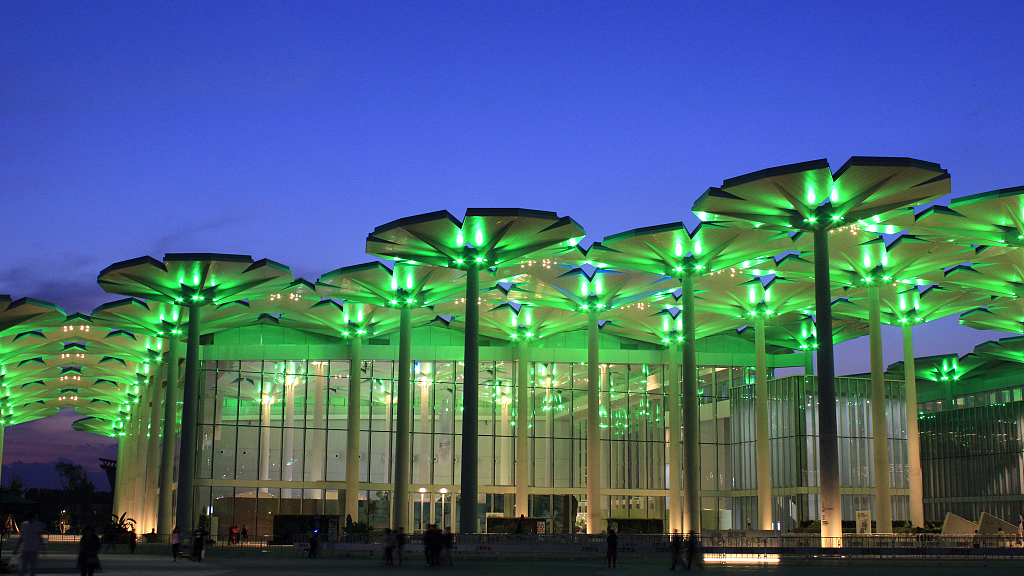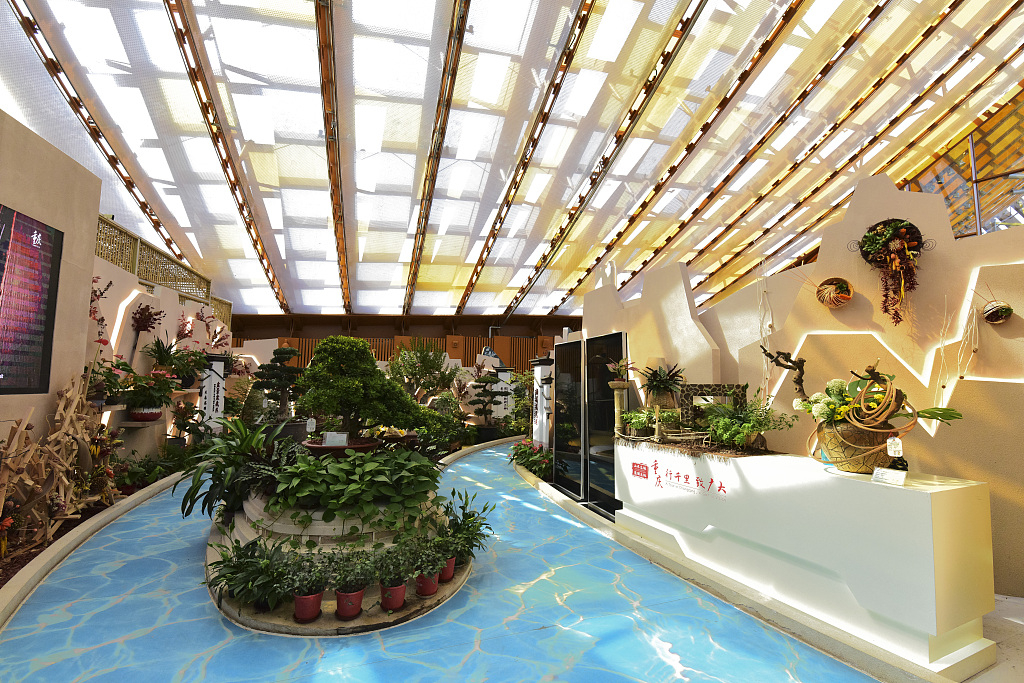
Editor's note: Rachana Gupta is an Indian blogger, poet and a freelance writer based in Shanghai. The article reflects the author's views, and not necessarily those of CGTN.
The Beijing Horticultural Expo 2019 had its closing ceremony on Wednesday. With the theme, "Live Green, Live Better," pavilions from more than 110 countries and international organizations in the past five months provided glimpses of their respective cultures and histories.
The expo is an ideal platform for exhibitors to promote the natural richness of their country and to create awareness about the industry among ordinary masses while also showcasing the harmony between humans and nature.
Except for international participants, more than 120 unofficial exhibitors and 17 enterprises from China also participated in the event. These Chinese participants displayed the country's latest technological advancements in 5G technology, augmented reality, and AI to highlight the concept of "Beautiful China" and its goal of preserving the environment with the help of digital technology.
Chinese President Xi Jinping, in his keynote speech during the grand inauguration of the Beijing Expo, stressed that countries should work together to efficiently resolve global environmental challenges such as climate change, marine pollution, and biological protection.
This will help the world to attain the UN sustainable development goal in 2030. He also highlighted the significance of fostering a deeper bond between nature and humans, along with using technological solutions for tackling environment-related issues.
With this nature-centric mindset, China, especially in the last two decades, has been taking aggressive measures to preserve its environment. For instance, in its commitment to the Paris agreement, the country vowed to cut down its greenhouse gas emissions per unit of GDP by 60-65 percent from 2005 levels by 2030. To fulfill this commitment, and to accomplish its dream of building a green economy, China has been pouring in enormous resources alongside framing stringent laws. In 2017 alone, the country invested almost 279.8 billion U.S. dollars in renewable energy, which accounted for nearly 50 percent of the world's total renewable energy spending.

The China Pavilion of the 2019 Beijing International Horticultural Exhibition in Yanqing District, Beijing, September 26, 2019. /VCG Photo
The China Pavilion of the 2019 Beijing International Horticultural Exhibition in Yanqing District, Beijing, September 26, 2019. /VCG Photo
Apart from that, the country has also included compulsory targets for carbon intensity reduction, and forest coverage rate into its Five-Year Plan for National Economic and Social Development. It is worth mentioning that China, as a result of its stringent actions, has managed to reduce the carbon intensity cumulatively by 45.8 percent percent in 2018, with respect to the 2005 emission levels.
Besides, in 2018, forest coverage rates reached 22.96 percent while the forest stock volume swelled by 4.56 billion cubic meters in comparison to 2005 figures. Also, the country's energy consumption and carbon dioxide emissions per unit of GDP shrunk by 11.35 percent and 14.2 percent respectively between 2016 and 2018. These figures have not just helped China in achieving its annual target ahead of schedule but also built a sturdy foundation for it to accomplish its GHG (greenhouse gas) emission reduction target included in the 13th Five-Year Plan.
Additionally, NASA, in one of its reports published earlier this year, highlighted that China alone has contributed to almost a 25-percent increase in the world's green leaf area in the past two decades. Also, the country has initiated several forestation projects primarily in the desiccated northern regions, including Hebei, Inner Mongolia, and Qinghai.
It is estimated that forestation in these areas, once completed, will account for nearly 23 percent of the mainland's total land area.
Moreover, China has issued a large number of green bonds, which are specifically designated for climate and environmental projects. Reportedly, this policy is in line with the country's ambition of winning what it calls "three tough battles" as containing pollution level is its integral part along with reducing systematic financial risk and alleviating poverty. In 2018, Chinese entities issued over 30 billion U.S. dollars worth of green bonds, securing a second position after the United States. In addition to the green bonds, China, in 2016, had also announced the plan to create a National Green Finance Mechanism, thus establishing itself as the first nation in the world to do so.
By looking at the past trends, the current figures and future projections, it seems that the efforts of the Chinese government to foster an environmentally-friendly, green economy will pay dividends in the future.
However, as the ancient Chinese saying goes, "A single flower does not make spring," in the same way a single nation cannot make the whole planet greener. Therefore, events such as Horticultural Expo should be conducted not just in China but all across the globe, because these events effectively provide a comprehensive platform to the global community for sharing innovative solutions and pooling their efforts towards building a shared greener and sustainable future.
(If you want to contribute and have specific expertise, please contact us at opinions@cgtn.com.)